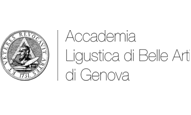In 1751, members of those Genoese aristocratic families that were more receptive to the new ideas of the Enlightenment then beginning to circulate through Europe (including the Doria, Durazzo, Lomellini, Spinola and Cambiaso families), wishing to claim a political role for themselves in the development of economic and cultural initiatives that could give rise to a new renaissance, after the crisis that had engulfed the Republic, took action for an Academy of Fine Arts to be set up in Genoa, urged on by a group of artists.
A few years after its founding, the school's art collection consisted almost exclusively of drawings, engravings and plaster casts; indispensable models and catalogues for a way of art teaching that involved the study of “classic beauty” and of the work of the great masters of the past through the practice of copying, as it is evident from reading the oldest inventories, dated 1756, post 1770 and 1823. In the first of these documents, besides a painting depicting the protectors of the institute - “Nostra Signora, S. Luca e S. Cattarina” - in the large hall, seven paintings are recorded in the assembly hall, all work of contemporary artists and now all lost, with the exception of a painting by Galeotti, depicting Amore fighting with Pan, which is still in the collection today.
Until the threshold of the 20th century, a collection of plaster casts of the most celebrated sculptures of classical antiquity was an essential asset for every Academy or School of Fine Arts. In 1831, following the move to the current site, as shown by the inventories of the mid-seventeenth century and by a drawing kept in the institute's archive, reproducing the position of the pieces in the great hall, the casts of the biggest and most prestigious works– including the Belvedere Torso, the Farnese Hercules and the Borghese Gladiator – occupied the great columned hall known as the “Room of Statues or Casts”, placed on moulded wooden bases painted in grey. Alongside the ones of the most important works of classical antiquity was a collection of casts of sculptural masterpieces from the 15th and 16th century (Lorenzo Ghiberti, Matteo Civitali, Michelangelo) and of neoclassicism (Antonio Canova and Berthel Thorwaldsen).
Many other examples, including partial casts and architectural, decorative or anatomical elements, were lined up on the shelves on the walls of the various classrooms or in the attic galleries.
While the older inventories provide no information about the provenance of the casts, useful information can be gathered from the “Libro degli Accademici e degli Studenti. 1751-1804” (Book of the Accademics and Students). This source indicates that the first plaster cast gallery collection was largely owing to the generosity of the Cambiaso family. Many other pieces came from Gerolamo Durazzo, while Anton Raphael Mengs was behind the entry of the celebrated group of “Wrestlers” in 1772. Marcello Durazzo's generosity brought casts of Canova's “Hebe” and the figures of Michelangelo's “Dawn” and “Dusk” from the Medici tombs, while Giacomo Brignole was linked to Thorwaldsen's “Mercury”, to name just a few of the more prestigious pieces.
The didactic purpose of the material, which brought the risk of accidents through handling, the continued wear through use, the school’s many relocations, and damages sustained during the bombing of 1942, drastically reduced the collection's size.
What remains of the collection is now kept in storage, awaiting a much-desired and much-needed restoration so that they can be displayed to the public; the presentation of a small group of restored casts in the museum's rooms gives visitors a mere taste of the wealth of a collection that, at the end of the 19th century, had reached such a considerable size that it was an indisputable pride of this historic Genoese institution.




